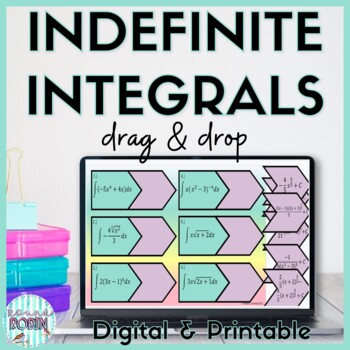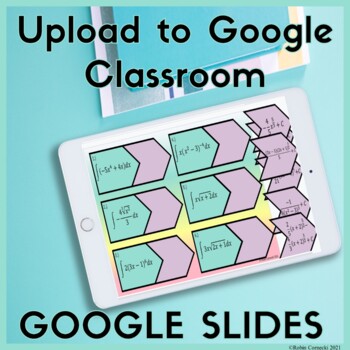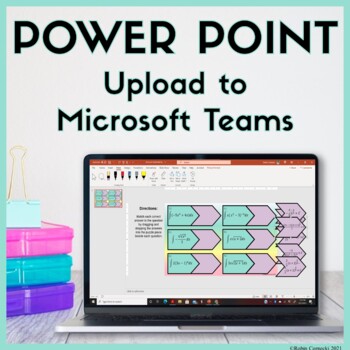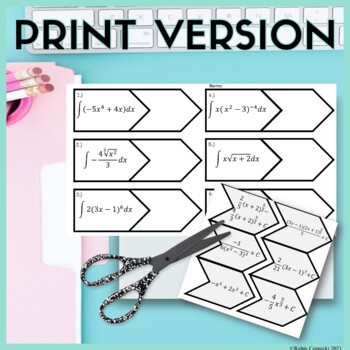Evaluate Indefinite Integrals Activity
- PDF
- Google Apps™
- Internet Activities
- Microsoft OneDrive

Description
Give your Calculus students a fun and engaging way to practice their understanding of Evaluate Indefinite Integrals with this distance learning review activity. This Evaluate Indefinite Integrals Drag and Drop Activity includes 6 questions that students can drag and drop the answers to match the question. Students will practice using the u-substitution, power rule, and sum rules of integration.
This resource is perfect for Distance Learning (zero prep) or in the classroom. It can be used with Google™ or Microsoft™. When using Microsoft™, go to File -> Download as a Powerpoint.
You must have a free Google account to access the document.
When you purchase, you will receive a PDF containing the link to this file. You will also receive teacher instructions and an answer key.
⭐ These activities can be used digitally or as a hands-on activity with the provided pdf handouts included. ⭐
✅ Answers are in factored form when necessary.
✅ The preview video is for demonstration purposes only, they are not matched correctly on purpose.
Don't forget to leave a review to earn credit towards future resources at no extra cost to you!
You may also like:
Let's be social!





